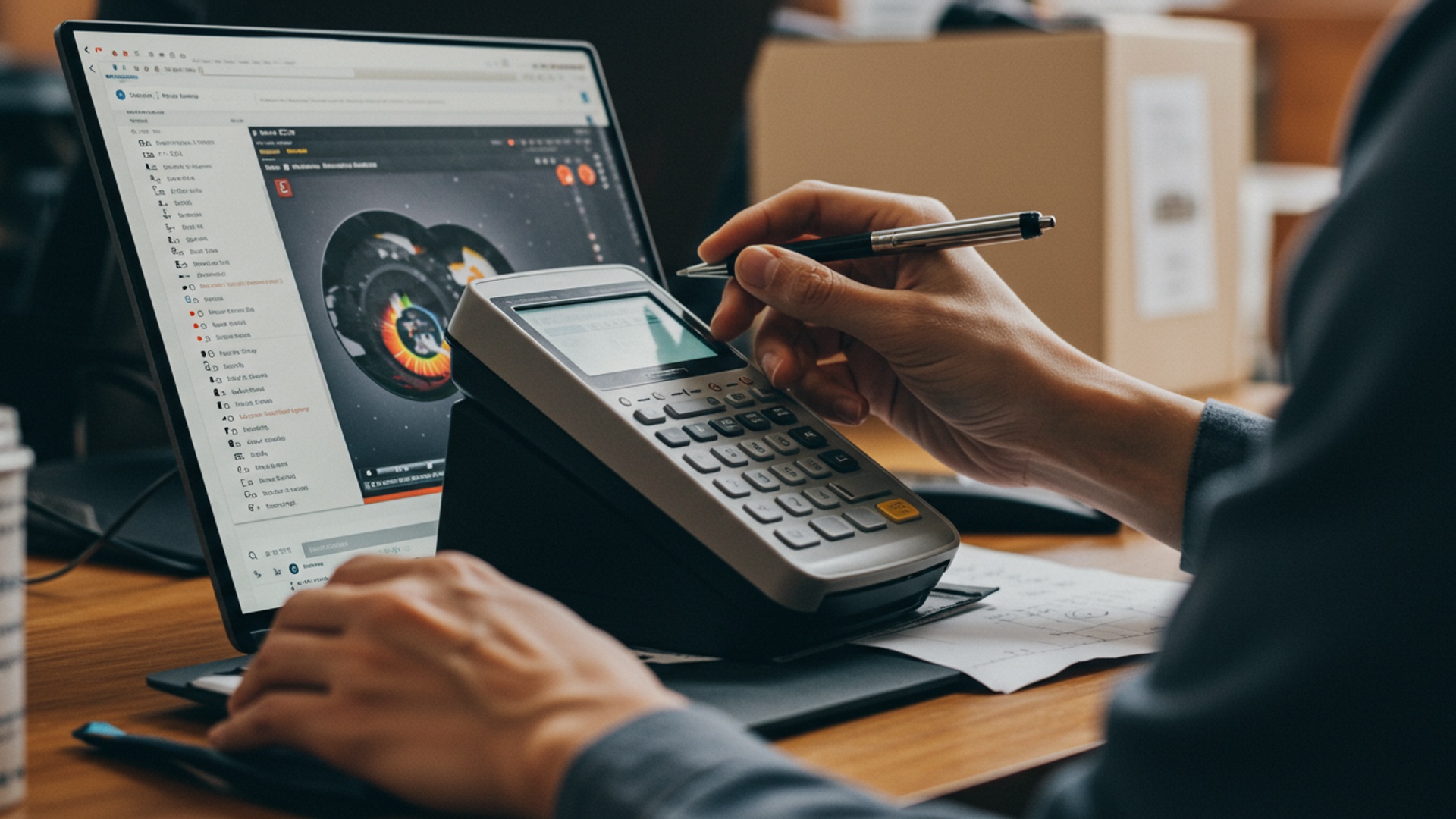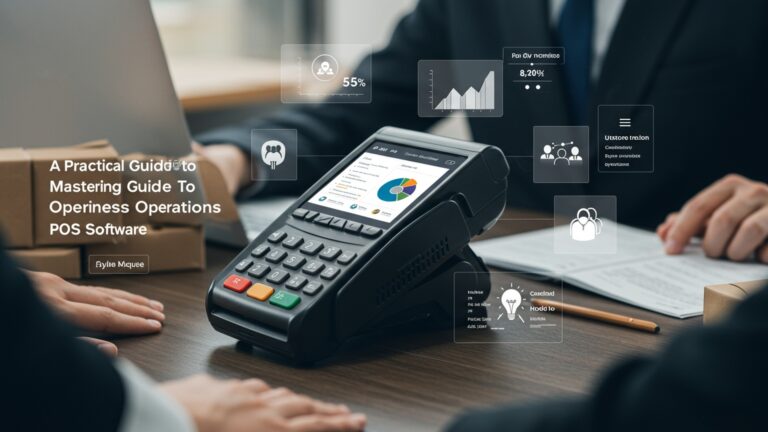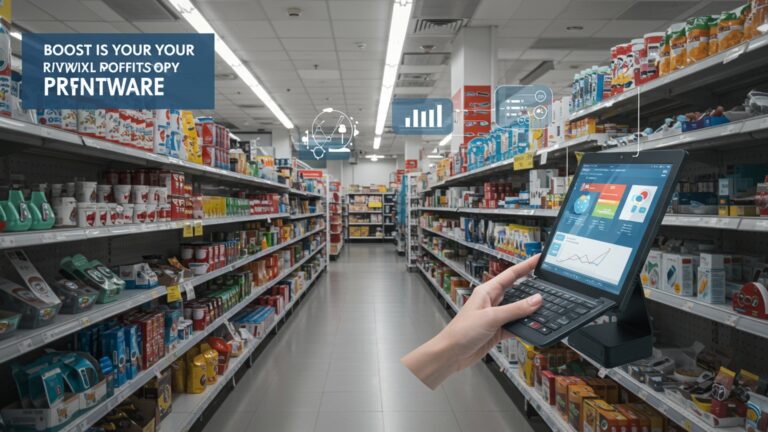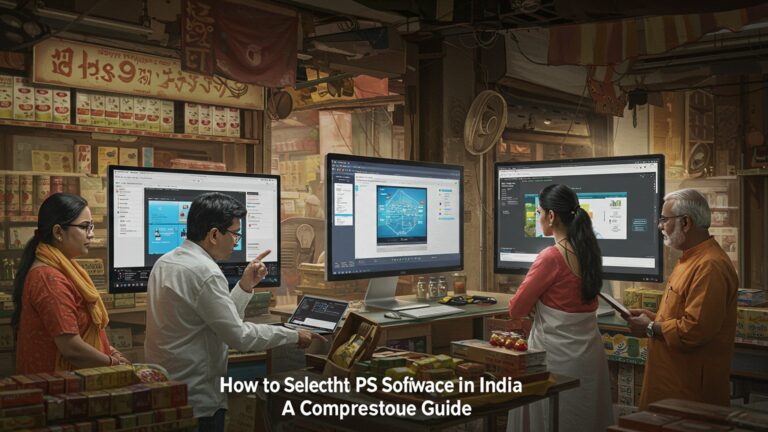Master How to Select POS Software for Your Grocery Store
In today’s hyper-competitive retail landscape, a robust pos software for grocery store operations is no longer merely a transaction tool but a strategic imperative. Modern grocers navigate complex supply chains, managing everything from perishable produce to diverse packaged goods, while also meeting the growing demand for seamless checkout experiences and integrated online ordering. The right system streamlines inventory management in real-time, optimizes pricing strategies. provides invaluable data analytics to forecast demand and personalize customer loyalty programs. With recent advancements like AI-driven insights and contactless payment solutions becoming standard, selecting the ideal POS system empowers your store to enhance efficiency, reduce waste. significantly boost profitability in an increasingly digital marketplace.

Understanding the Core of POS Software for Grocery Stores
At its heart, Point of Sale (POS) software is the central nervous system for retail operations. For a grocery store, this technology transcends simple transaction processing, evolving into an indispensable tool for managing every facet of the business. Traditionally, a POS system handled sales. modern solutions for grocery stores are comprehensive platforms that integrate inventory, customer data, employee management. robust analytics, all designed to streamline operations and enhance profitability.
The unique demands of a grocery environment—dealing with perishable goods, varying price points, frequent promotions. high transaction volumes—make the right pos software for grocery store not just a convenience. a critical competitive advantage. It moves beyond just ringing up sales to providing insights that drive better purchasing decisions, reduce waste. improve the overall customer experience.
- Transaction Processing
- Inventory Management
- Customer Management
- Reporting & Analytics
Fast, accurate scanning of barcodes, weight-based pricing. diverse payment options.
Tracking stock levels, managing expiry dates. automating reorder alerts for thousands of SKUs.
Building loyalty programs, tracking purchase history. personalizing offers.
Generating real-time data on sales trends, popular products. employee performance.
Key Features Your Grocery Store POS Software Must Have
When evaluating options, certain features are non-negotiable for a grocery store looking for robust POS software. These functionalities directly impact efficiency, profitability. customer satisfaction.
- Advanced Inventory Management
- Perishable Tracking
- Batch & Lot Tracking
- Weight-Based Pricing
- Automated Reorder Points
- Supplier Management
- Customer Relationship Management (CRM) & Loyalty Programs
- Customer Profiles
- Loyalty Programs
- Targeted Marketing
- Robust Reporting & Analytics
- Real-time Sales Data
- Profitability Reports
- Inventory Turnover
- Employee Performance
- Customizable Reports
- Flexible Payment Processing
- EMV & Contactless Payments
- Gift Card & Store Credit Management
- Split Payments
- Scalability & Multi-Store Management
- If you plan to expand or already operate multiple locations, the pos software for grocery store must be capable of managing inventory, pricing. reporting across all stores from a central dashboard.
- Employee Management
- Time Clock Integration
- Role-Based Permissions
- Performance Tracking
- Integration Capabilities
- Accounting Software
- E-commerce Platforms
- Hardware Compatibility
Essential for groceries, this feature allows tracking of expiry dates, managing first-in, first-out (FIFO) or first-expired, first-out (FEFO) stock rotation. minimizing spoilage.
Crucial for recalls and quality control, especially for produce or baked goods.
Seamless integration with scales for items like fresh produce, meat. deli products.
Set minimum stock levels to trigger automatic purchase orders, ensuring shelves are always stocked without over-ordering.
Track vendor performance, order history. pricing directly within the system.
Store purchase history, preferences. contact data.
Create and manage points-based systems, discounts. personalized promotions to encourage repeat business.
Use customer data to send relevant offers, improving engagement and sales.
Monitor sales performance by item, category, time of day. employee.
interpret margins on different products and categories.
Identify slow-moving items and optimize stock levels.
Track sales by cashier and identify training opportunities.
Tailor reports to gain specific insights relevant to your grocery store’s unique operations.
Support for chip cards, Apple Pay, Google Pay. other tap-to-pay methods for speed and security.
Integrate gift card programs seamlessly.
Allow customers to use multiple payment methods for a single transaction.
Track employee hours for payroll.
Control access to sensitive functions based on employee roles, enhancing security.
Monitor individual sales metrics.
Seamless integration with platforms like QuickBooks or Xero to simplify bookkeeping.
If you offer online ordering or delivery, the POS should sync with your e-commerce site to keep inventory consistent.
Ensure the software is compatible with essential hardware like barcode scanners, receipt printers, cash drawers. customer-facing displays.
Evaluating Different Types of POS Software Deployment
The way POS software is hosted and accessed significantly impacts cost, maintenance. flexibility. Understanding the differences between deployment models is crucial for selecting the right pos software for grocery store.
- Cloud-Based (SaaS) POS
- Pros
- Cons
- Use Case
- On-Premise POS
- Pros
- Cons
- Use Case
- Hybrid Models
- Pros
- Cons
- Use Case
This model, often referred to as Software-as-a-Service (SaaS), hosts the POS software on the vendor’s servers and delivers it via the internet. Users access the system through a web browser or a dedicated app on a tablet or computer.
Lower upfront costs (subscription-based), automatic updates and maintenance by the vendor, accessible from anywhere with an internet connection, easy scalability. enhanced data backup.
Requires a stable internet connection, potential data security concerns (relying on vendor’s security). less customization control.
Ideal for most modern grocery stores, especially those with multiple locations or a desire for remote management and minimal IT overhead.
Also known as a “legacy” or “traditional” POS, this model involves installing the software directly on your own servers and computers within your grocery store. You own the software license outright.
Full control over data and customization, no reliance on internet connectivity for core operations, one-time purchase cost (though ongoing maintenance may apply).
Higher upfront investment, responsibility for all updates, maintenance. security, requires dedicated IT staff or resources, less accessible remotely.
Suitable for very large grocery chains with substantial IT infrastructure, specific security requirements, or those operating in areas with unreliable internet.
Some providers offer a hybrid approach, combining elements of both cloud-based and on-premise systems. For instance, core transaction processing might happen locally, with data syncing to the cloud for reporting and backup.
Offers a balance of local reliability and cloud accessibility/backup, flexibility in data management.
Can be more complex to set up and maintain, potentially higher costs than pure cloud solutions.
Grocery stores seeking the best of both worlds, desiring local processing speed with cloud-based reporting and resilience.
Here’s a quick comparison:
| Feature | Cloud-Based (SaaS) | On-Premise |
|---|---|---|
| Cost Model | Subscription (monthly/annually) | One-time purchase + maintenance |
| Data Hosting | Vendor’s servers (cloud) | Your local servers |
| Accessibility | Anywhere with internet | Local network only (typically) |
| Maintenance & Updates | Vendor handles automatically | Your responsibility |
| Upfront Investment | Lower | Higher |
| Customization | Limited by vendor’s framework | High (if you have IT resources) |
| Internet Dependency | High | Low (for core functions) |
| Scalability | Very easy | Can be complex/costly |
Critical Considerations When Selecting Your POS Software for Grocery Store
Beyond features and deployment, several practical factors will influence your final decision and long-term satisfaction with your pos software for grocery store.
- Budget & Pricing Models
- Ease of Use & Training
- Vendor Support & Reliability
- Security Features (PCI Compliance, Data Encryption)
- Customization Options
- Future-Proofing & Updates
- Real-world Application: A Small Grocery’s Journey
Consider the story of “FreshMarket,” a local grocery store struggling with manual inventory counts and an outdated cash register. Owner Maria found herself constantly running out of popular items and overstocking perishables. After researching various options, she chose a cloud-based
pos software for grocery store that specialized in fresh produce management. Within six months, FreshMarket saw a 15% reduction in waste due to better inventory tracking, a 10% increase in average transaction value thanks to integrated loyalty programs. significantly faster checkout times. Maria noted, “The biggest game-changer was the real-time inventory. I no longer had to guess what to order; the system told me exactly what was selling and what was about to expire. It literally saved my business from drowning in guesswork.” This anecdote underscores the tangible impact the right system can have.
comprehend the total cost of ownership. Cloud-based systems typically involve monthly or annual subscription fees, which can vary based on the number of terminals, features. transaction volume. On-premise systems have a higher upfront cost for software licenses and hardware, plus ongoing costs for maintenance, updates. potential IT support. Don’t forget to factor in hardware costs (scanners, printers, tablets), payment processing fees. potential setup/training fees.
A complex system can lead to errors, slow down checkout lines. increase staff training time. Look for intuitive interfaces that are easy for cashiers and managers to learn quickly. A good system should minimize the learning curve, especially in a high-turnover environment like a grocery store.
What kind of support does the vendor offer? Is it 24/7? Via phone, email, or chat? Downtime in a grocery store means lost sales and frustrated customers. Reliable, responsive support is paramount. Look for vendors with a proven track record and positive customer reviews regarding their support services.
Handling customer payment insights and sensitive business data requires top-tier security. Ensure the POS software is PCI (Payment Card Industry Data Security Standard) compliant and uses robust data encryption. This protects both your business and your customers from data breaches.
Every grocery store has unique operational flows. Can the POS system be customized to fit your specific needs, such as custom reports, unique product categories, or specific loyalty program rules? While cloud systems offer less deep customization than on-premise, many offer configurable settings.
Technology evolves rapidly. Does the vendor regularly release updates, new features. security patches? A system that stagnates will quickly become obsolete, hindering your ability to adapt to market changes or new payment technologies.
Actionable Steps: Your Selection Checklist for a Grocery Store POS System
Navigating the selection process can be daunting. a structured approach ensures you make an informed decision. Use this checklist to guide your journey to find the perfect pos software for grocery store.
- Assess Your Specific Needs
- What are your current pain points (e. g. , slow checkout, inventory errors, lack of customer data)?
- What essential features do you absolutely require (refer back to the “Key Features” section)?
- What is your budget for initial setup and ongoing costs?
- How many registers/terminals do you need?
- Do you need multi-store capabilities or an integrated e-commerce solution?
- Research Top Contenders
- Look for POS solutions specifically designed for grocery stores, as they often have specialized features like weight-based pricing and perishable inventory management.
- Read industry reviews, expert analyses. customer testimonials. Sites like Capterra, G2. Software Advice can be valuable resources.
- Identify at least 3-5 vendors that appear to meet your core requirements.
- Request Demos & Free Trials
- Never commit without seeing the software in action. Request personalized demos that focus on your specific grocery store operations.
- If available, take advantage of free trials. This allows you and your staff to get hands-on experience with the system in a real-world setting. Pay attention to ease of use, speed. overall workflow.
- Prepare a list of questions beforehand to ask during demos.
- Check References & Reviews
- Ask vendors for references from other grocery stores of similar size and type. Speak to these references about their experience with the software and the vendor’s support.
- Dig deeper into online reviews, looking for recurring complaints or praises, especially concerning customer support and system reliability.
- Negotiate & grasp Contracts
- Don’t be afraid to negotiate pricing, especially for long-term commitments or if you’re purchasing multiple licenses.
- Carefully read the entire contract. interpret all fees (setup, monthly, transaction, cancellation), terms of service, support agreements. data ownership policies.
- Clarify what happens to your data if you decide to switch providers in the future.
- Plan for Implementation & Training
- A smooth transition is key. Work with the vendor to create a detailed implementation plan, including data migration (existing product lists, customer data), hardware setup. staff training.
- Allocate sufficient time and resources for comprehensive staff training to ensure everyone is comfortable and proficient with the new pos software for grocery store. This minimizes errors and maximizes efficiency from day one.
Conclusion
Ultimately, selecting the right POS for your grocery store transcends mere feature checklists; it’s about future-proofing your operations. Remember that the best system isn’t just about speedy checkout; it’s about seamless inventory management, like tracking fresh produce by weight or managing expiration dates for deli items. My personal advice is to prioritize systems offering robust cloud capabilities and mobile integration, allowing you to manage stock from the aisles or even remotely. I’ve seen how integrating a good POS can drastically reduce shrinkage and improve customer flow, especially with self-checkout options or scan-as-you-go technology, which are becoming essential trends. Don’t overlook the importance of a user-friendly interface for your staff, as this directly impacts adoption and efficiency. Consider how a system like one focused on inventory management can transform your daily operations. This isn’t just an expense; it’s a strategic investment. Embrace this opportunity to empower your grocery store, making every transaction smarter and every customer interaction smoother.
More Articles
Mastering the POS Scale: How Smart Weighing Elevates Your Retail Game
Future Proof Your Business: How to Leverage Cloud-Based POS Software Benefits
Unleash Business Mobility: How to Implement Mobile POS Software Solutions Seamlessly
A Complete Guide: How to grasp and Use Essential POS Software Features
FAQs
What exactly is POS software for a grocery store?
Simply put, POS (Point of Sale) software is the central system that manages your grocery store’s daily transactions and operations. It’s much more than just a cash register; it handles sales, processes payments, tracks inventory, manages customer data. can even generate reports to help you interpret your business better.
Why is having good POS software so crucial for my grocery business?
A robust POS system is crucial for efficiency and profitability. It speeds up checkout lines, helps prevent inventory shrinkage, provides real-time data on sales and stock. can improve customer satisfaction with loyalty programs. Ultimately, it helps you make smarter business decisions and reduces manual errors.
What are the absolute must-have features I should look for in a grocery store POS?
For a grocery store, key features include robust inventory management (especially for perishables and expiry dates), integrated barcode scanning and scale support, customer loyalty programs, quick checkout processing, multi-lane support. comprehensive reporting. Integration with your payment processor is also essential.
How do I figure out if a POS system is easy enough for my staff to learn and use?
Ease of use is vital to avoid slowing down your operations. Look for systems with intuitive interfaces and clear navigation. Ask for a demo or free trial to let your staff test it out. Read user reviews specifically mentioning ease of training and daily use. A good system shouldn’t require extensive training time.
Should I consider a cloud-based POS or something installed directly on my computers?
Most modern grocery stores benefit greatly from cloud-based POS systems. They offer automatic updates, remote access to your data, lower upfront hardware costs. better data security through offsite backups. On-premise systems might offer more control but come with higher maintenance and setup complexities. Cloud is generally the more flexible and future-proof option.
What kind of costs should I expect beyond just the initial software price?
It’s vital to look at the total cost of ownership. Beyond the software subscription or license, you’ll likely have costs for hardware (scanners, receipt printers, cash drawers, terminals), installation, training, ongoing support plans. payment processing fees. Some systems also charge for additional modules or features as your business grows.
Can a POS system help me manage fresh produce and items with expiry dates effectively?
Absolutely! This is a critical feature for grocery stores. Look for systems that offer inventory tracking by batch or lot number, support for expiry date management with alerts. FIFO (first-in, first-out) inventory methods. This helps minimize waste, ensures fresh products are sold first. improves overall stock rotation.






